
There Are Three Types of Mammals
Placentals, Monotremes, and Marsupials
All mammals are warm-blooded, have fur, and produce milk. However, there are three main types of mammals, placentals, monotremes, and marsupials, distinguished by how they give birth. Placentals give birth to well-developed young, and they nourish their young in the uterus through the placenta. Examples include gorillas, humans, whales, rodents, tigers, and bats. Monotremes lay soft-shelled eggs. Examples include the platypus and the echidna.
Then we have Marsupials, which give birth to small and underdeveloped young. Most female marsupials have pouches. Examples include kangaroos, wallabies, wombats, possum, opossum, Tasmanian devils, and koalas. Below is a kid friendly overview of the three types of mammals.
Marsupials on Three Continents
Close to 70% of the 334 extant marsupial species are concentrated on the Australian continent, including mainland Australia, Tasmania, New Guinea, and nearby islands. The remaining 30% are distributed across the Americas, primarily in South America. The Virginia opossum is the only marsupial native to the United States, but it is quite common. For example, we have lots of them in our neighborhood in Dallas. It should also be noted that there are a lot of marsupial fossils in Antarctica, which means that marsupials once lived there.
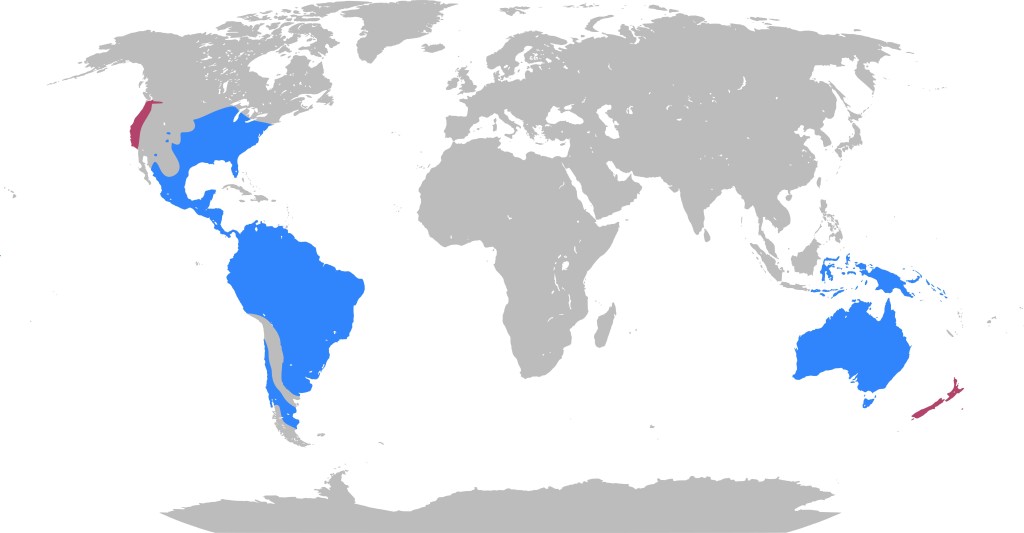
DNA evidence supports a South American origin for marsupials, with Australian marsupials arising from a single Gondwanan migration of marsupials from South America, across Antarctica, to Australia. These continents were connected and part of the supercontinent Gondwana back then. The ancestors of the marsupials, the metatherians split from placentals around 100 million to 120 million years ago during dinosaur times.
Bamboozled by an Opossum
We’ve found opossums in our house, behind our laundry machine. We’ve seen them along the street, on lawns in the neighborhood and we’ve seen them climb trees. They are pretty common in our neighborhood. It should be noted that they are not possums even though they are sometimes called that. Possums is an Australian relative to the Opossum.
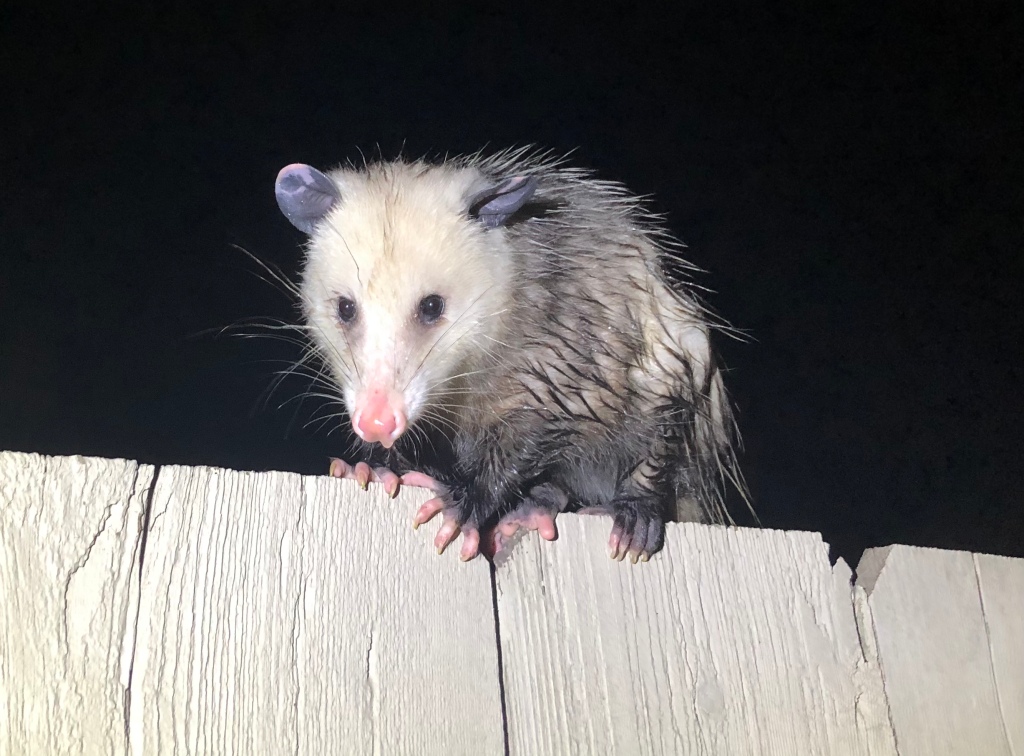
One day when my wife and I were out walking the dogs we saw an opossum lying on the alleyway behind our house. He looked dead. However, when I checked, he was warm and appeared to be alive even though he was unconscious. We put him in a box containing a soft blanket and took him to the veterinary. We were willing to pay for any treatment or surgeries needed. At the veterinarian he woke up and they later placed him in a nature sanctuary. We did not need to pay anything.
Later on, we learned that when an opossum is threatened or harmed, they will “play possum“. They mimic the appearance and smell of a dead animal. This response is involuntary, like fainting, and not a conscious act. That might have been what was going on. So, I might have been bamboozled by an opossum. Bamboozlement seems to be the story of my life. Luckily, he was a male and the veterinary said it looked like he had been hit by a car, so us taking him to the veterinary probably did not do much harm. However, the “playing possum” thing is something to keep in mind with these animals.
Australia and our Photos of Marsupials
When our kids were young, we traveled to Australia where we encountered a lot of marsupials in the wild, in nature preserves and at zoos We encountered a lot of kangaroos but also wombats, koalas, and Tasmanian Devils. I can add that checking out kangaroos and other marsupials was not the only thing we did in Australia. We also spent a week in Great Barrier Reef where we did snorkel and scuba diving.
The first picture below was from our visit to the Blue Mountains. We stopped to have lunch, and I decided to go and take a leak. As I approached a bush, I heard some noise and when I looked behind the bush, I saw that there was a kangaroo behind it. What you see in the picture below is what I saw. The kangaroo was just two yards away. He seemed to be as startled as I was, and we stared at each other for a few seconds. I had my camera hanging around my neck, so I decided to take a photo. Then he hopped away. I am so glad I did not pee on his lunch.

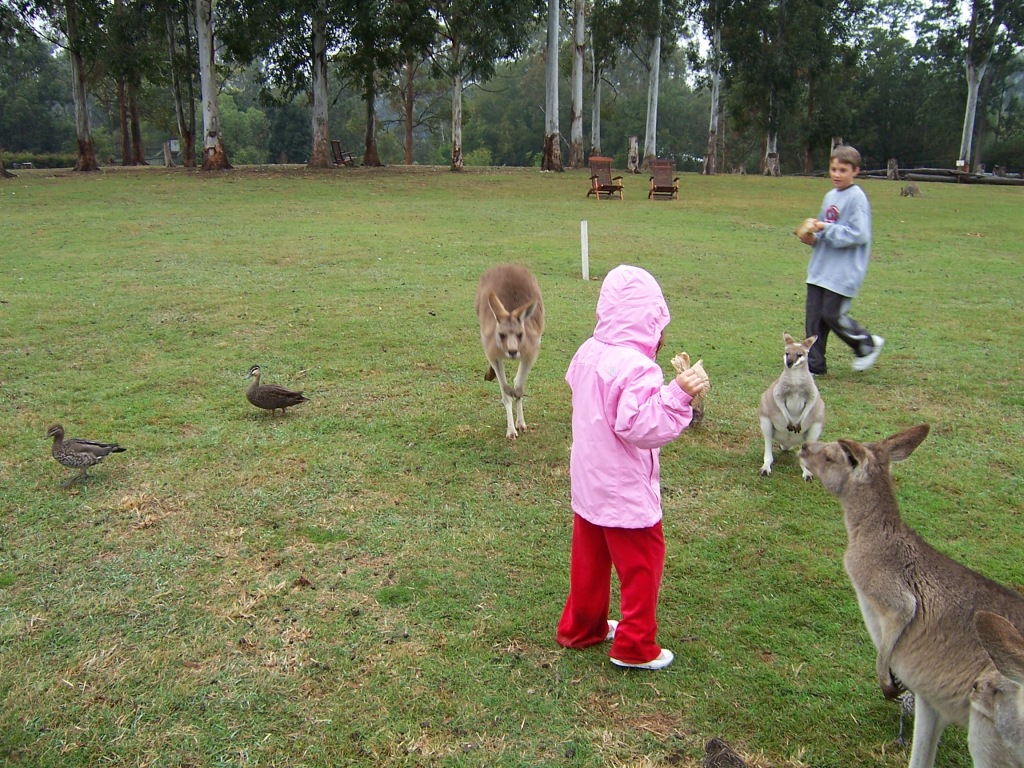
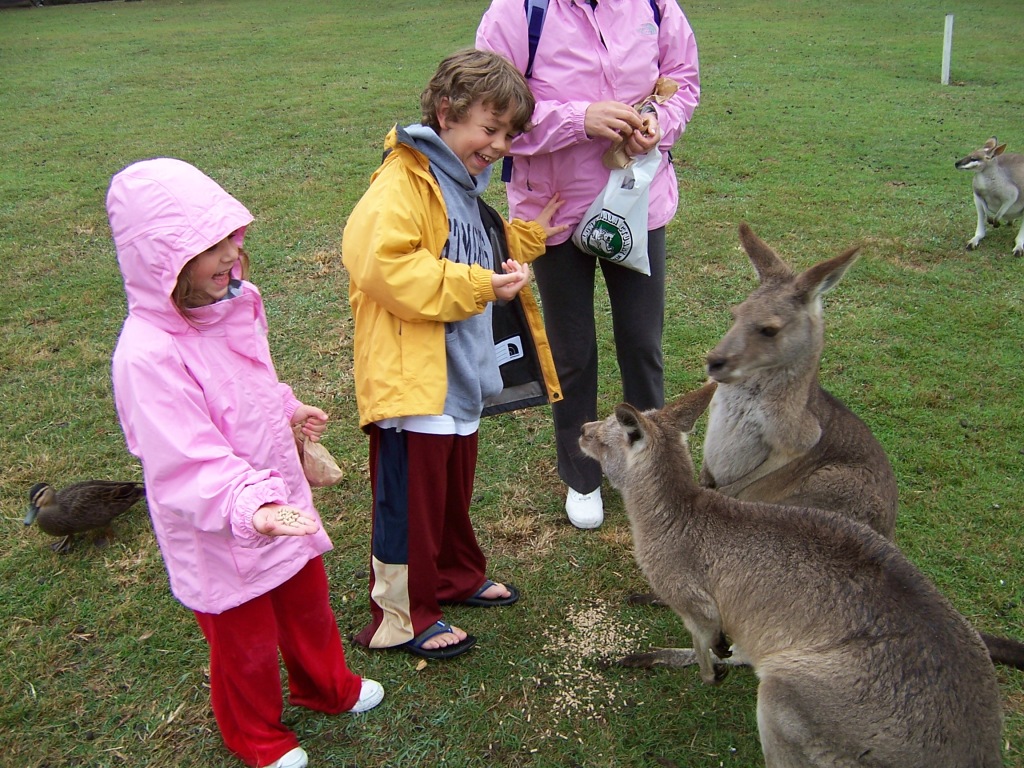
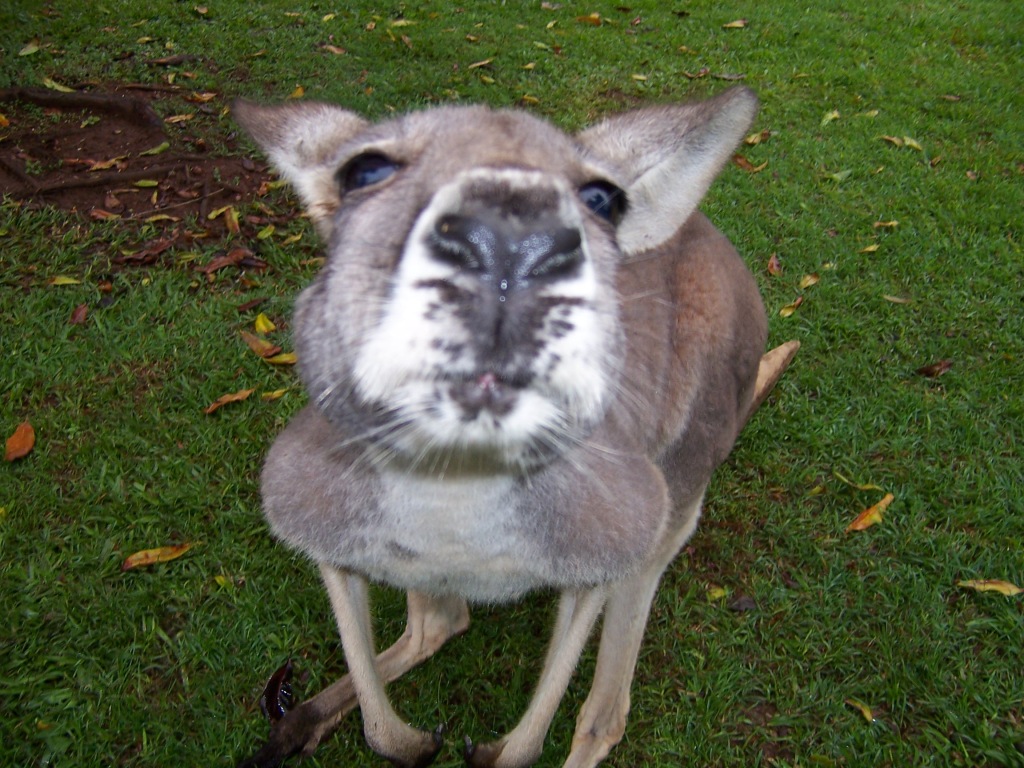
Note : Koalas are often called Koala bears, but they are not bears.
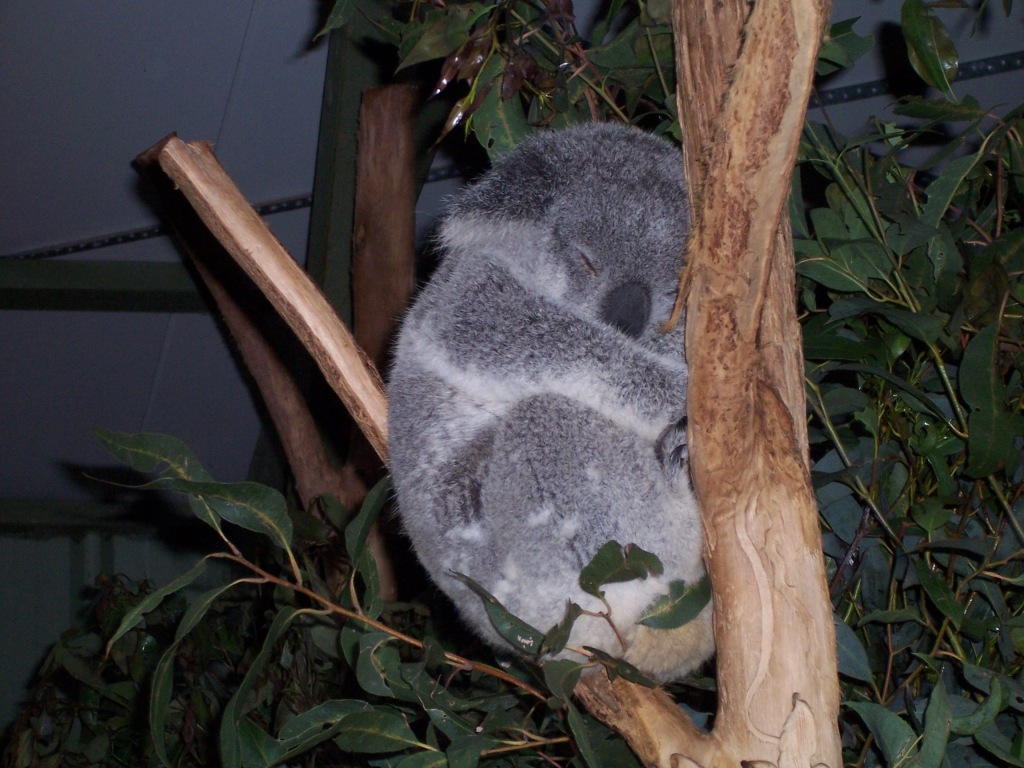
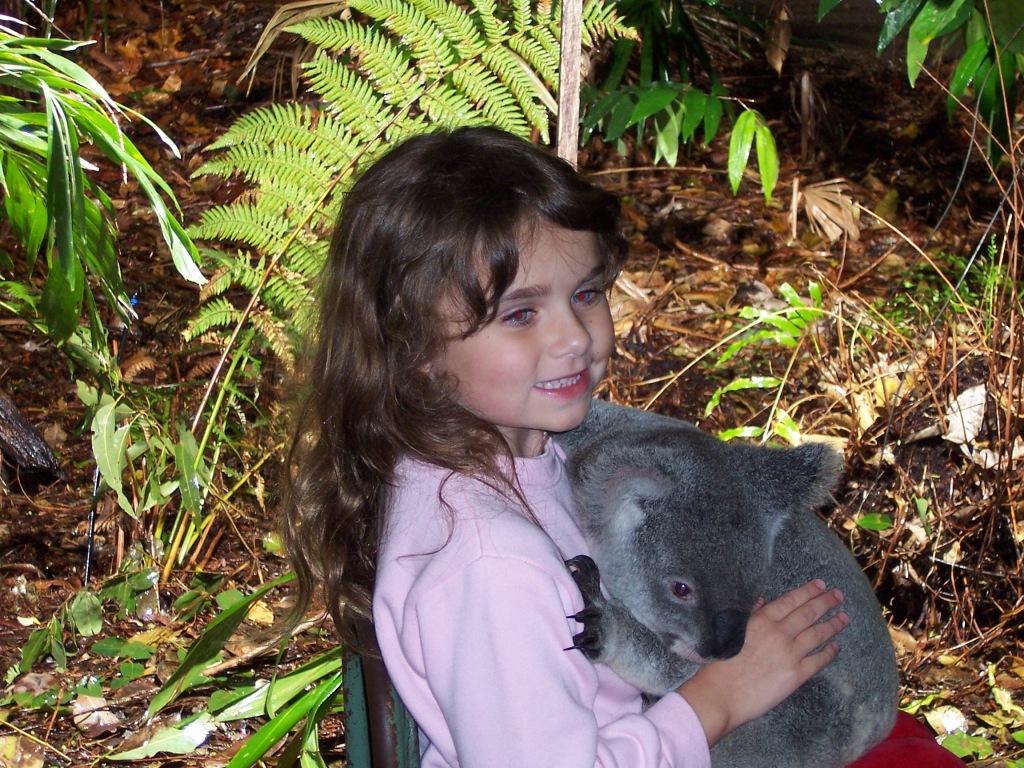

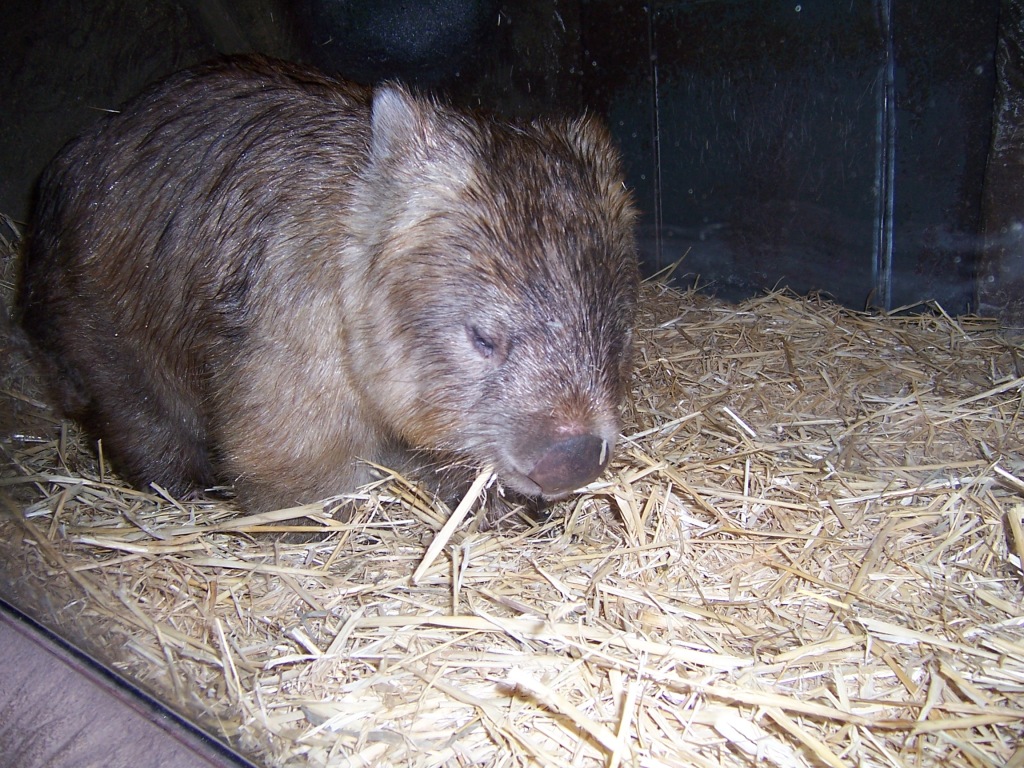
One interesting fact about Wombats is that they produce cubic shaped poop. This makes the poop stackable, and the wombats use it to mark their territory and attract mates.
To see the Super Facts click here
]]>Look at the two pictures below. One is my daughter with the critter man, and she is holding a milk snake. The other picture is of the deadly coral snake. Can you tell them apart by using the rhyme?
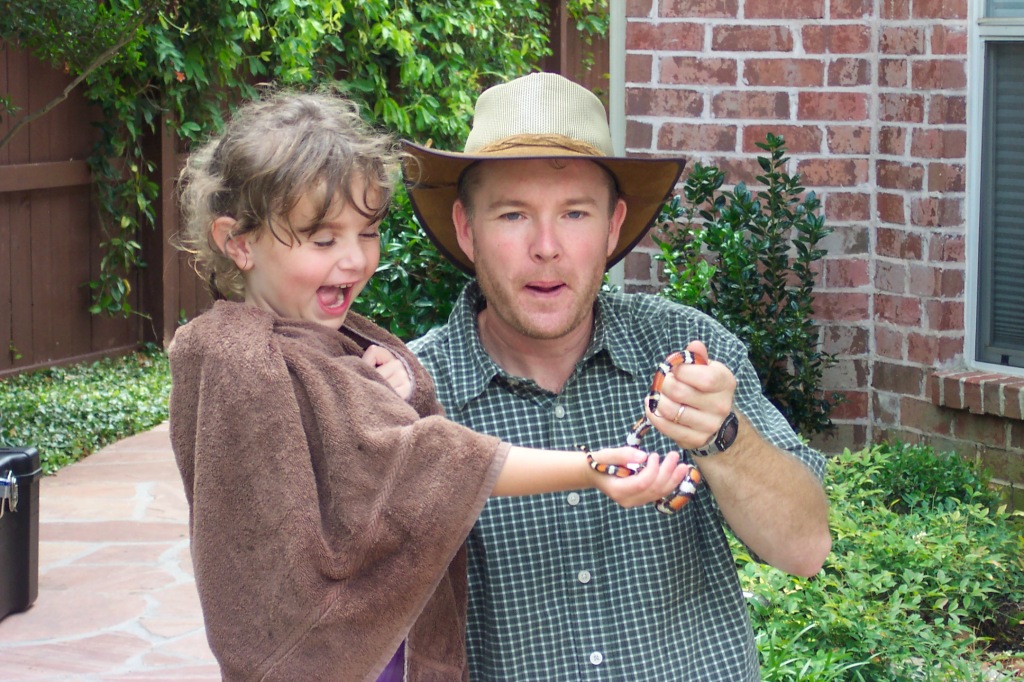
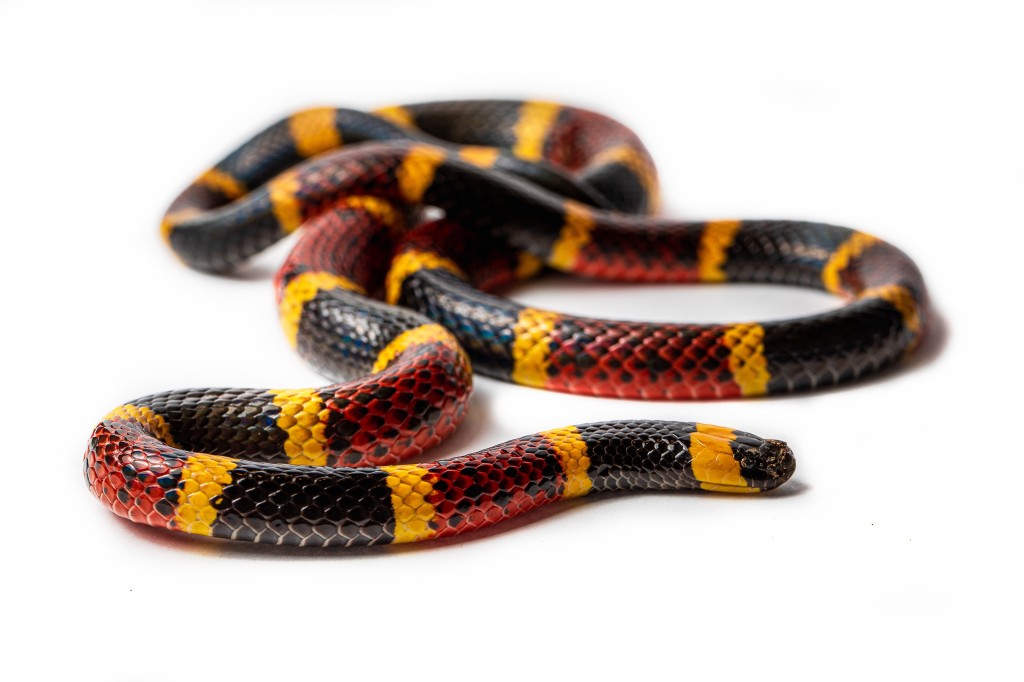
The Green Mamba
When our kids were young, we frequently visited Dinosaur State Park near Glen Rose, Texas. On one occasion I was carrying my four-year-old son on my shoulders. Suddenly he shouted, “Dad you almost stepped on that Green Mamba”. I looked down and between my feet crawled a green snake. It was a harmless green grass snake, but I did not even know there were green snakes in Texas.
On another occasion I was showing a whipsnake to my daughter. It was at a girl scout camp, and I had taken the snake out from its glass jar located in a room where they stored nonvenomous snakes. I was holding it in my hands. The whipsnake was pretty strong and decided to crawl under my shirt sleeve. I had to fight it to get it out from underneath my shirt sleeve and back into its glass jar. I probably looked like a clown juggling a snake. Whipsnakes are thin but very strong, long and stubborn.
We’ve also seen all kinds of water snakes as well as the dangerous water moccasin or cottonmouth as it is also called. We’ve seen rat snakes and snakes in our yard. I’ve seen a lot of snakes in the wild here in Texas and I typically don’t know what kind they are. That’s why I needed The Lone Star Field Guide to Texas Snakes by Alan Tennant.
Lone Star Field Guide to Texas Snakes by Alan Tennant
The goal of this blog is to create a list of what I call super facts. Important facts that we know to be true and yet they are shocking or disputed among non-experts. Super facts are important facts that people get wrong.
However, I sometimes create posts that are not super facts but contain other interesting information, such as this book review and book recommendation of the Lone Star Field Guide to Texas Snakes. This book features 105 snakes and includes hundreds of photos, information on prey and reproduction, habitat information, geographical distribution, and more. I bought the paperback version of the book.
- Paperback – Publisher : Taylor Trade Publishing; Third edition (December 28, 2005), ISBN-10 : 1589792092, ISBN-13 : 978-1589792098, 352 pages, item weight : 1.15 pounds, dimensions : 7.1 x 0.81 x 8.46 inches, it costs $43.46 new on Amazon, but you can buy used copies much cheaper. Click here to order it from Amazon.com.
- Kindle – Published : Taylor Trade Publishing; 3rd edition (January 27, 2006), ASIN : B00IUFI1K8, 352 pages, it costs $10.99 on US Amazon. Click here to order it from Amazon.com.
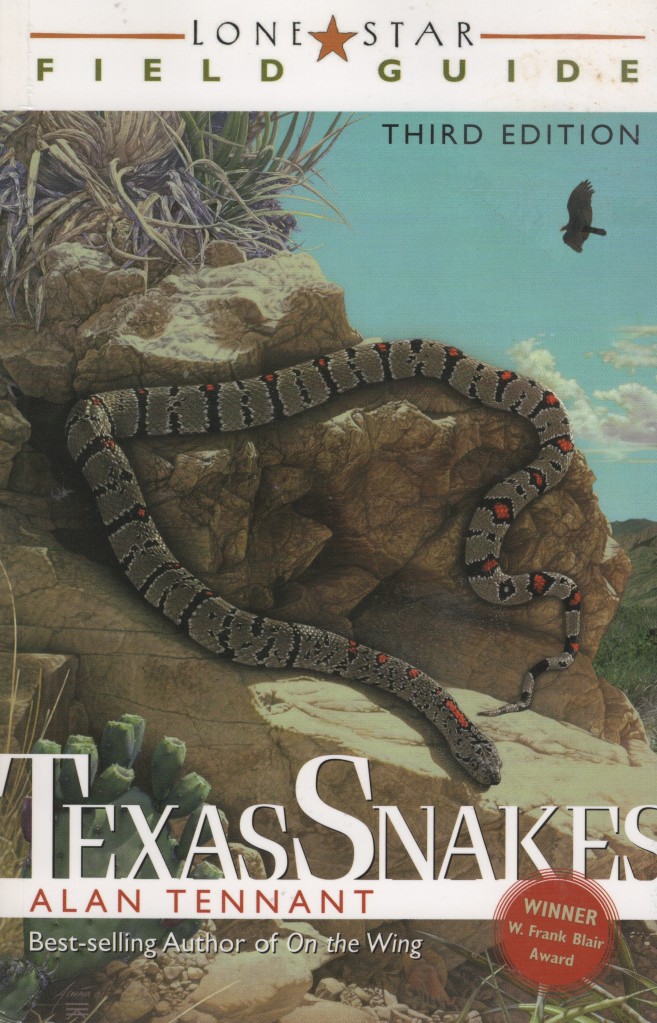
Amazon’s description of the book
The State of Texas not only boasts the largest snakes in North America, but also the largest number of species—105. This guide describes in detail each and every one of them, from the benign Texas long-nosed snake, to the venomous Western Cottonmouth. Facts on the biology and behavior are given, plus the latest findings on abundance, reproduction, prey, sizes, and habitat.
In addition, introductory chapters describe the physiology and diet of snakes, and an all-important section on “Venom and Evenomation” debunks the many myths surrounding what to do when bit by a venomous snake. 128 color plates of species and subspecies aid in identification.
This is my five-star review for Lone Star Field Guide to Texas Snakes
The review I posted below is a copy from Amazon, but I’ve improved it a bit. For example, in my original review of 2008 I called snakes poisonous. Snakes are not poisonous, they are venomous.
You almost stepped on that green mamba
“Dad, you almost stepped on that Green Mamba”. That is what my 4-year old (sitting on my shoulders) told me when we were walking in Dinosaur Valley state park. Using the second edition of this book I was able to identify the snake as the “Rough Green Snake” when I got home.
I am glad there are no Green Mambas in Texas (in the wild), but there are still some very poisonous snakes to watch out for. Seven species of rattle snake, two species of Massasauga, and a pigmy rattle snake, cottonmouth (water moccasin), three species of copperhead, and the Texas Coral snake. The Texas Coral snake is the most venomous of the snakes in Texas (but it is not aggressive) and the poison from the Mojave Rattle Snake can kill six adults (lives only in West Texas). There are 105 species of snakes in Texas.
This edition (third edition) has essentially the same pictures and information as the second edition, but the third edition is organized better, is a little bit bigger, and more updated. What I really like about this book is that for each of the snakes it has a map of Texas showing the distribution of the snake.
The book is also well organized, and the photos are good. It is also an interesting book to read, it contains a lot of facts about the various snakes. Once you start reading about the various snakes, and looking at the pictures and the distribution maps, you just can’t put it down. The book tickles your curiosity. Compared to other Texas snake books that I have seen this one is the most interesting and the most well-organized of them all. If you quickly need to identify a snake this is the right book.
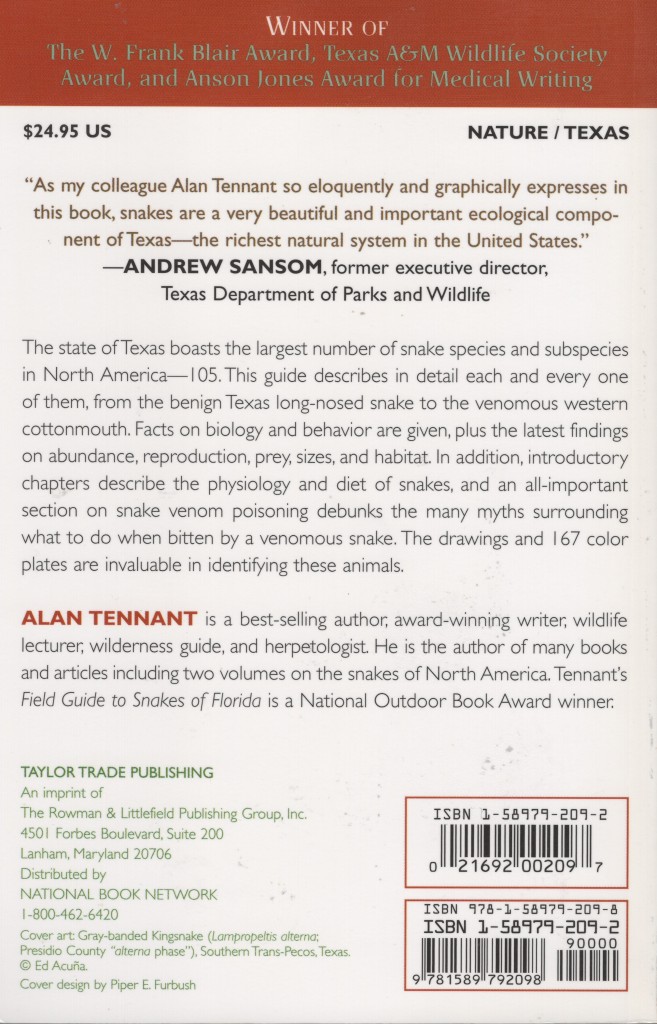
Western Diamondback Rattlesnake Crotalus Atrox
One of the most common venomous snakes in Texas is the Western Diamondback Rattlesnake. It is fairly big, 3 to 7 feet long. Nearly all of the most serious cases of snakebite treated in Texas hospitals are inflicted by Crotalus Atrox, the Western Diamond-back. Deaths are uncommon but the loss of limbs is more common. There are 10 species of rattlesnake in Texas.
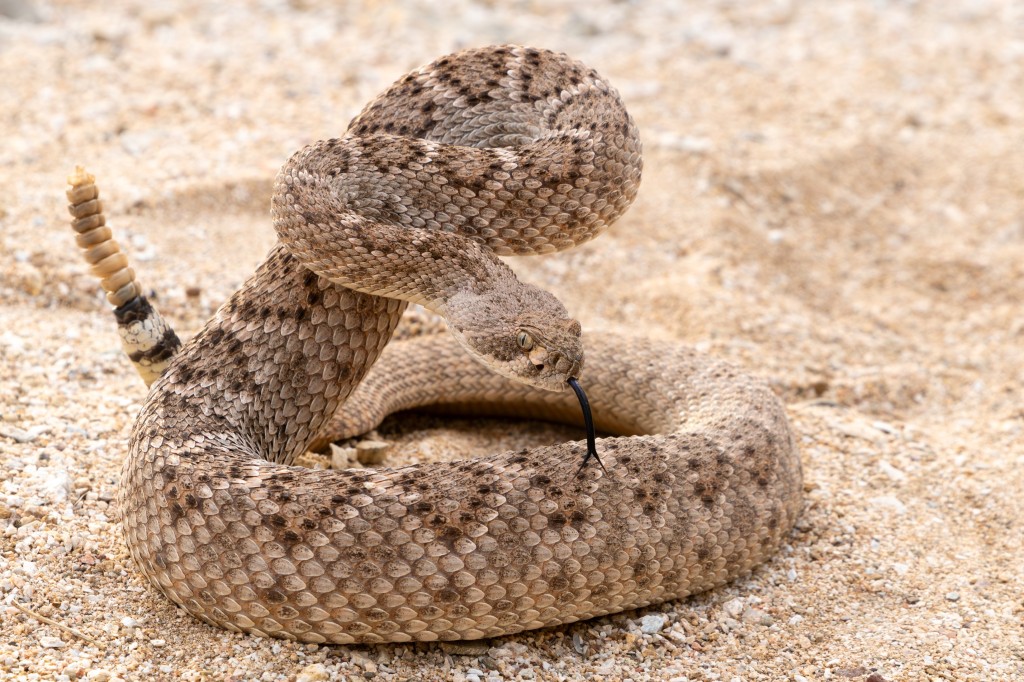
To see the Super Facts click here
]]>
I guess insects are animals too, and we have cicadas and crickets, wolf spiders, spider wasps of various kinds, including mud daubers and tarantula hawks, and sometimes I see them inside the house. We also have a lot of coyotes in the neighborhood. A few years ago, a coyote ran up to me as I was walking my two small dogs, a pug named Daisy and a Japanese Chin named Ryu. I was worried about my dogs, so I stared him down, and he ran off.
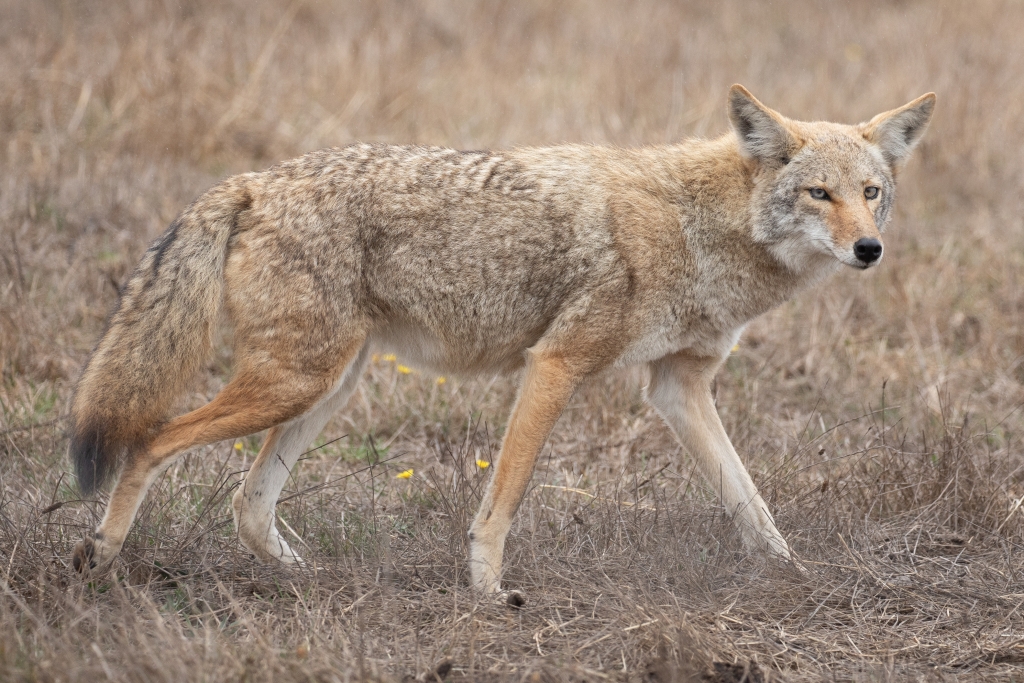
Every now and then we leave the city and there’s plenty of wild animals in the countryside. Two days ago, we visited a dark spot in Oklahoma. A dark spot is an exceptionally dark place intended for sky watching. I saw a skunk in the middle of the night. But we’ve seen foxes, coyotes, deer, antelope, wild turkeys, turkey vultures, wild pigs, bobcats, eagles, fish of all kinds, and many other types of animals. In the past we’ve also gone fishing and hunting and we’ve seen many wild animals that way.
We’ve also visited national parks, for example, Yellow Stone and Grand Teton where we’ve seen grizzly bears, black bears, cinnamon bears, wolves, bison, elk, moose, prong horn, big horn sheep, marmots, whizzle pigs, and much more. I can add that sometimes we also visit other countries where we’ve seen more exotic wild animals, kangaroos, crocodiles, sharks, koalas, lynx, dolphins, etc.
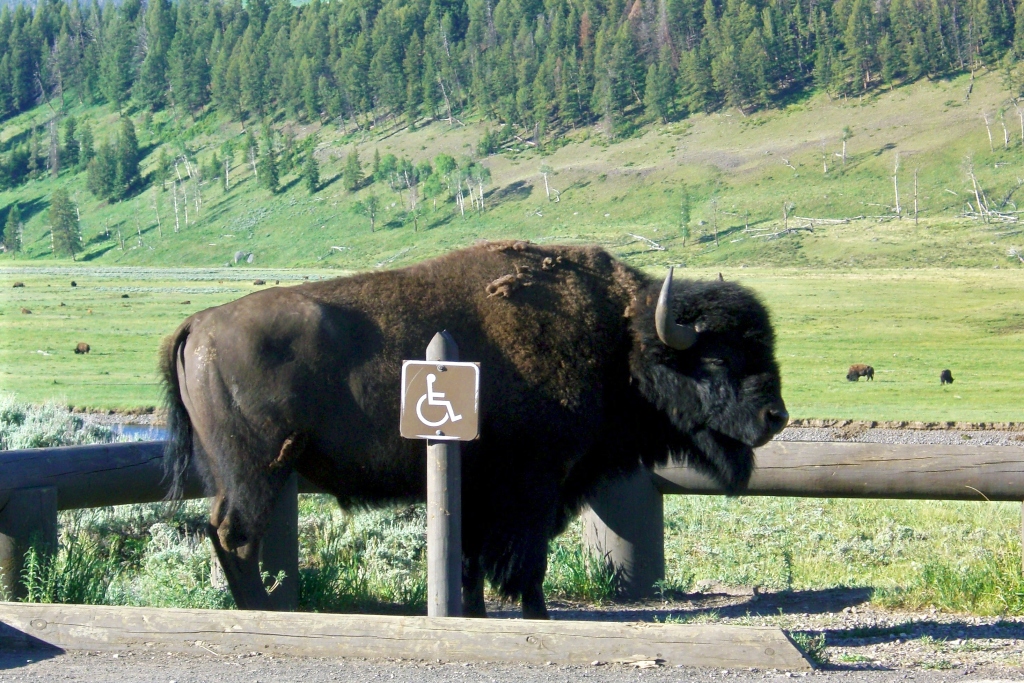

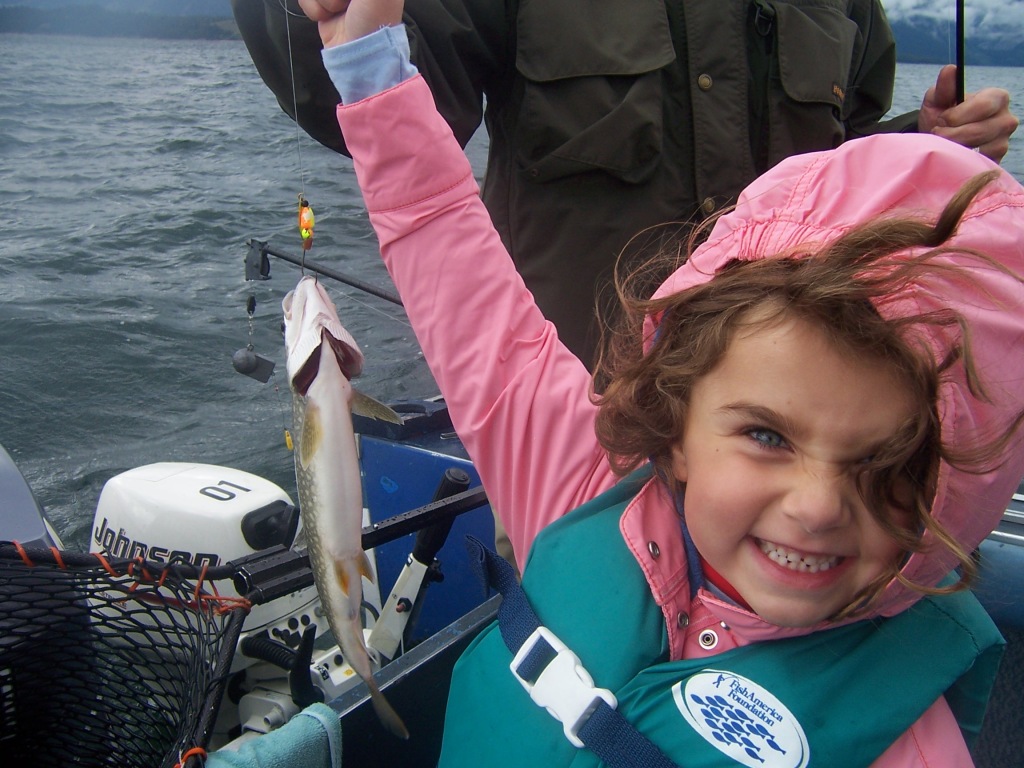



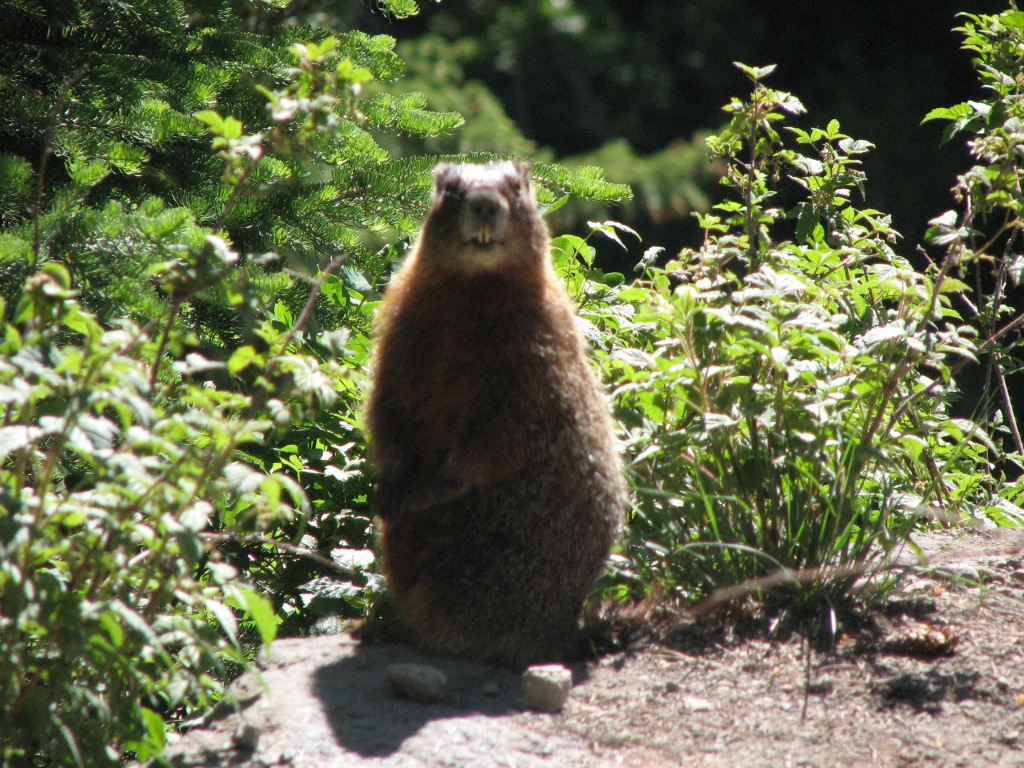



To see the Super Facts click here
]]>
Many dog welfare organizations, SPCA, ASCA, etc., recommend that dogs are neutered or spayed by the age of 6 months, or even as early as 8 weeks. It is also a common advice in dog books.
In addition, some veterinarians still hold onto this belief. It is easy to understand why. Dogs running loose and causing unwanted pregnancies resulting in puppies having to be euthanized is a sad problem we don’t want.
In other words, we know this to be true, it is an important fact since so many of us own a dog, roughly half of all US households do, and yet this information is highly surprising to many. This is why I consider it a super fact.

This less than a year-old article from the AKC states that “an age of six to nine months of age may be appropriate for neutering or spaying a toy breed puppy or small breed puppy but a larger or giant breed may need to wait until they are near or over 12-18 months of age.” The article also provides the following interesting information.
Research conducted by the University of California – Davis reveals that for some dog breeds, neutering and spaying may be associated with the increased risks of certain health conditions such as joint disorders including hip or elbow dysplasia, cranial cruciate rupture or tear, and some cancers, such as lymphoma, mast cell tumor, hemangiosarcoma, and osteosarcoma.
The research conclusions are not surprising. Sex hormones are important in the development of any animal. We know they affect psychological development as well as the musculoskeletal, cardiovascular, and the immune system.
I believe this is the University of California – Davis article in question. It is from 2020. Notice that the suggested guidelines for age of neutering is beyond 23 months for several of the giant breeds in the table featuring 35 breeds.

Recommended Ages for Neutering and Spaying
Below is a list of recommended ages for neutering and spaying for selected dog breeds.
- Australian Shepherd, for neutering and spaying it is your choice.
- Bernese Mountain Dog, you should neuter beyond the age of 23 months, but for spaying you have a free choice.
- Boxer, neuter and spay beyond the age of 23 months.
- Boston Terrier, neuter beyond 11 months, but for spaying you have a free choice.
- Doberman Pincher, never neuter, and you need to spay beyond the age of 23 months.
- German Shepherd, neuter and spay beyond the age of 23 months.
- Labrador Retriever, neuter beyond 6 months and spay beyond 11 months.
- Corgi, neuter beyond 6 months, but for spaying you have a free choice.
- Great Dane, despite being a very large dog you have a free choice for both neutering and spaying.
- Rottweiler, neuter beyond 11 months, but for spaying beyond 6 months.

We used to own a male Leonberger dog, which is a giant breed. Our breeder told us to wait beyond two years before neutering him, for health reasons. This article from Hillhaven Leonbergers states the following “We recommend not neutering until at least 2 years of age…Some Vets would recommend from 6 months but this is NOT a good idea.” To read more about the neutering and spaying of Leonberger dogs click here.
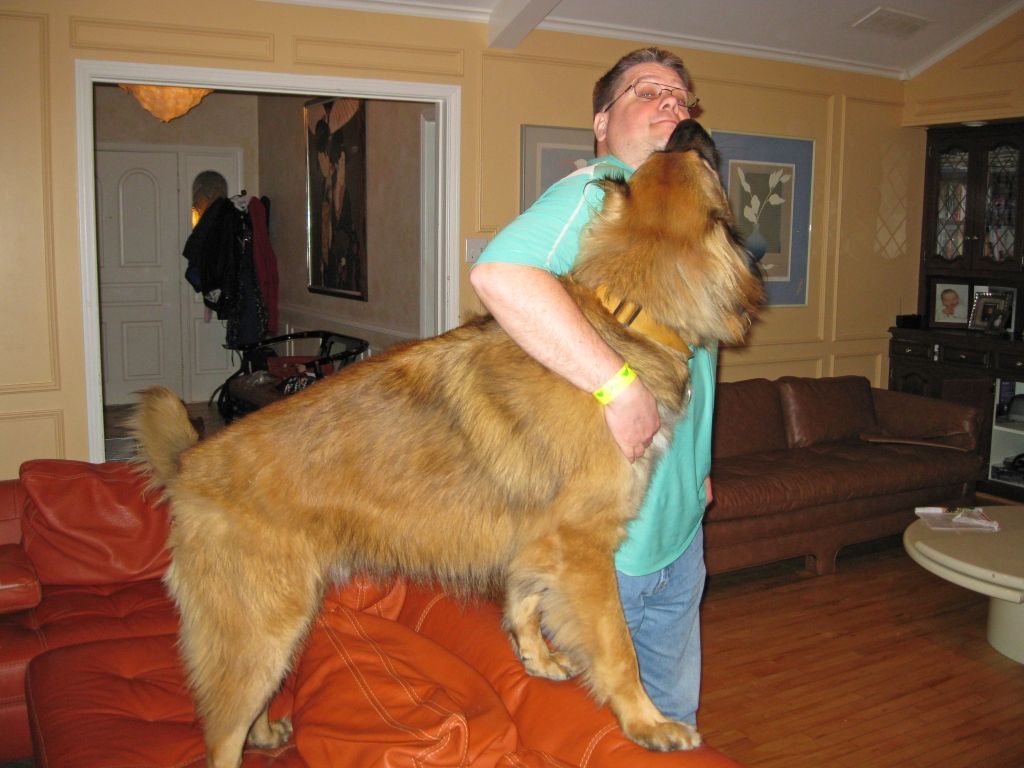
This article from the Saint Bernard Club of America states that “above all, no giant breed puppy should be altered before the growth plates in the bones have matured and closed, usually between 15 and 24 months of age.” This Newfoundland dog magazine states : Currently, the recommended age that a Newfoundland dog should be neutered is 18 to 24 months due to the possible health problems that can arise from altering before that age.
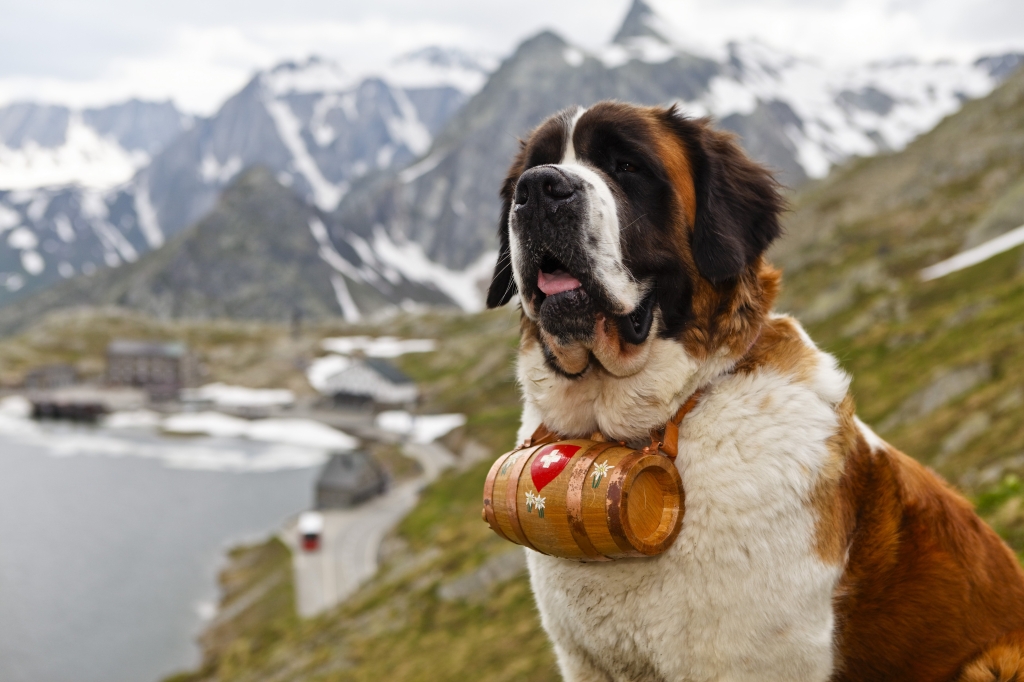
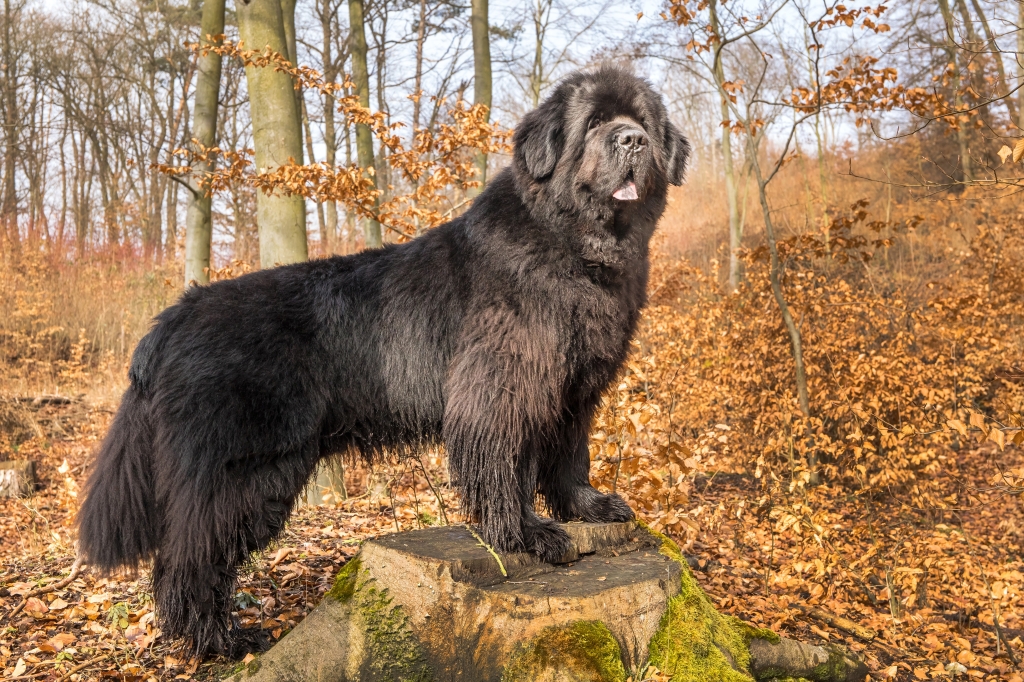
Even though the expert advice regarding the best age for neutering and spaying varies, it is clear that doing it at six months old is too early for many breeds and can harm their health.
To see the other Super Facts click here
]]>
I think this is a super-fact, because the Turkey is a very important bird to Americans and at the same time a lot of people, including Americans, do not know that Turkeys are not flightless birds.
Domesticated turkeys are flightless but wild turkeys are not flightless. Wild turkeys can fly distances of more than a mile, sometimes at speeds of 55 miles per hour. I’ve seen it with my own eyes on turkey hunts. I’ve seen turkeys fly and glide across the sky at the height of 30-50 feet. I’ve seen them flap their wings and then take off.
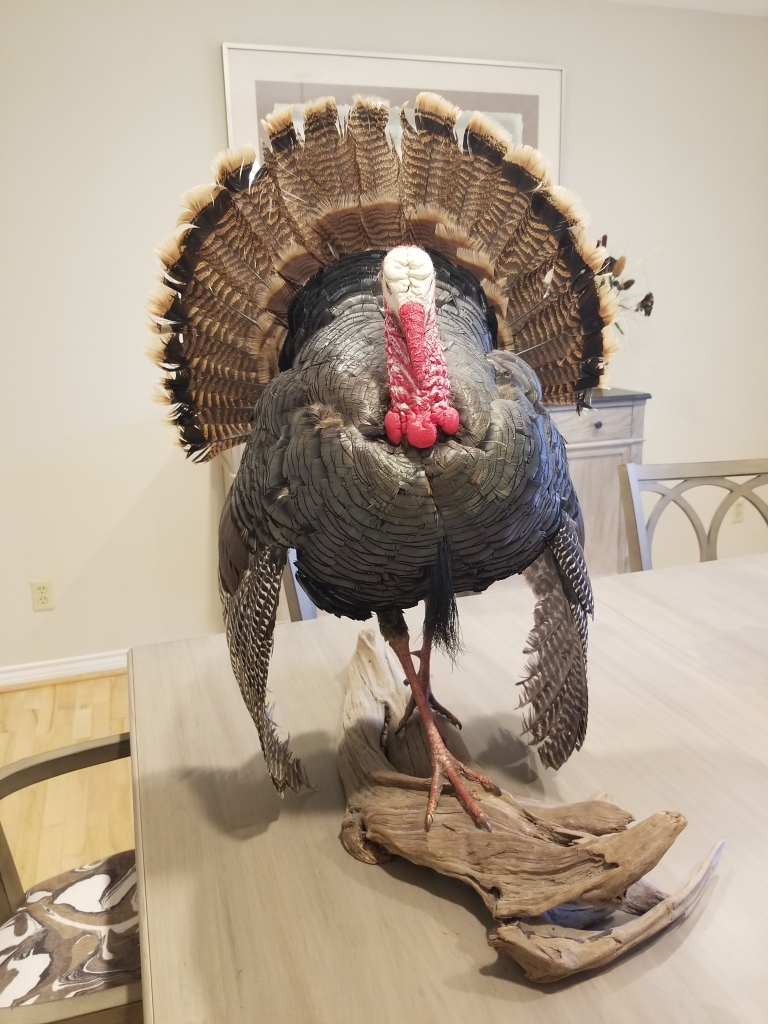
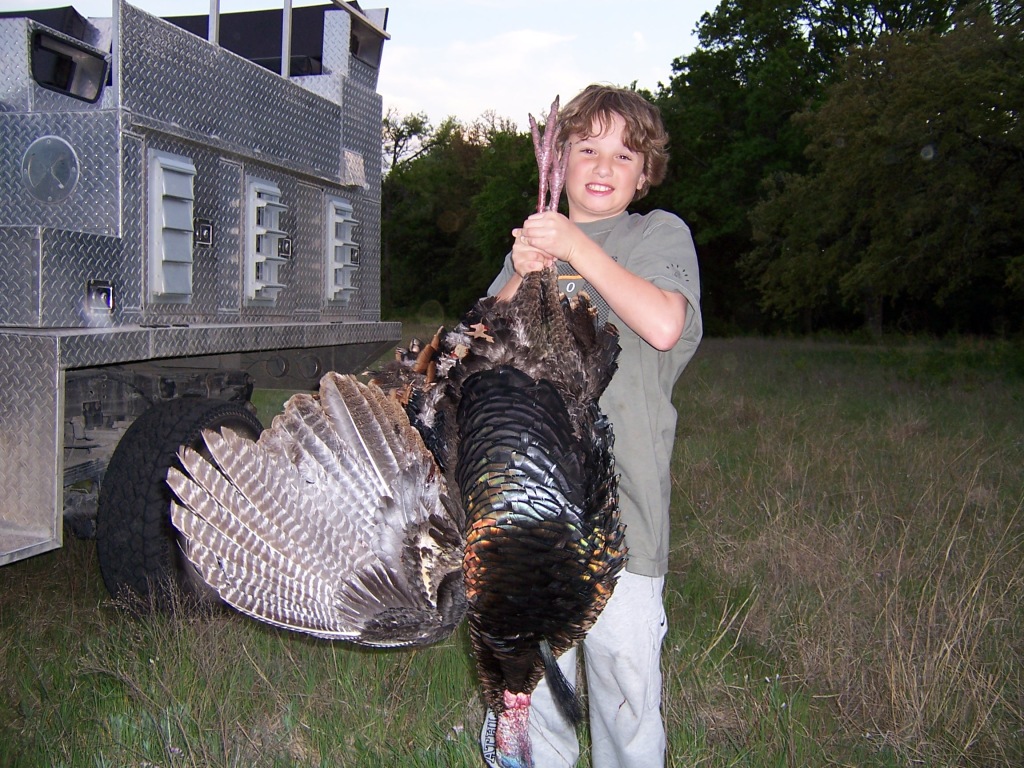
The photo above is a Tom, a male turkey, that my oldest son shot when he was 11 years old. Male turkeys are called Toms and females hens. We took it to a taxidermist for preservation and mounting. I should add that we typically ate the meat of everything we shot. Taking a wild turkey to the taxidermist makes eating the animal more complicated but you can typically ask for the breast meat of the turkey.
Personally, I think that legal hunting is a lot more humane than eating meat from animals from factory farms.
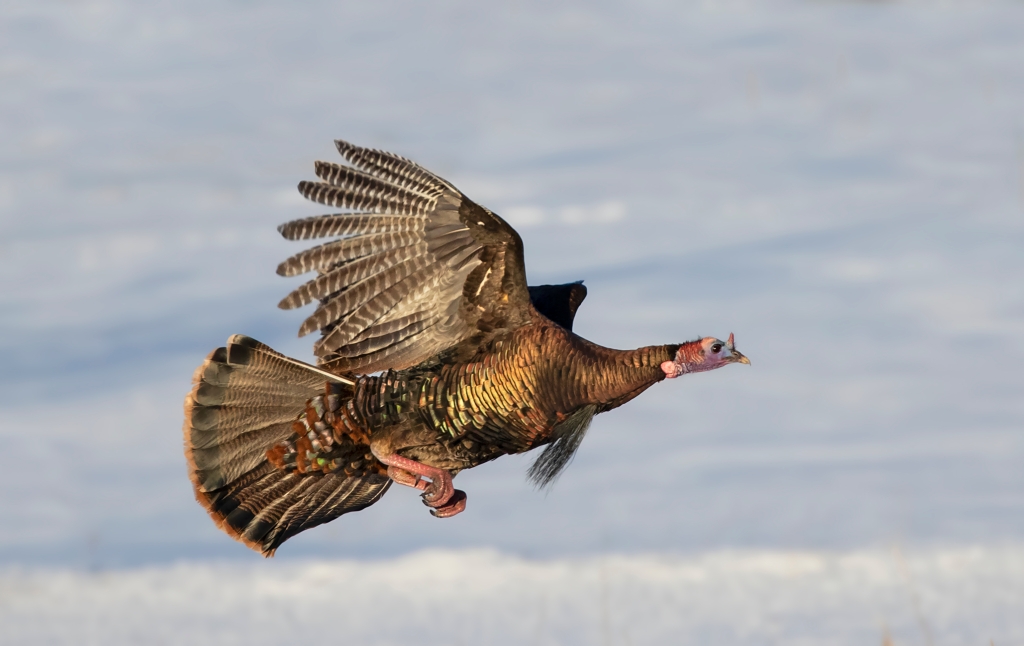
I should add that legal hunting is often encouraged for conservation and population management. For example, moose are hunted in Sweden (my native country) to manage their large population (400,000 moose), which can cause damage to forests and agriculture, as well as starvation among moose, if not managed. Illegal hunting, on the other hand, is something nefarious. Below is a video showing wild turkeys flying (video is about one minute long).
I wish everyone a very happy Thanksgiving
To see the other Super Facts click here
]]>
She lived in the Yellowstone and Grand Teton national park area, near Snake River, and she was seen and admired by thousands of visitors. Her Instagram account has 55,000 followers, books were written about her and documentaries were made. She had 22 cubs throughout her life.
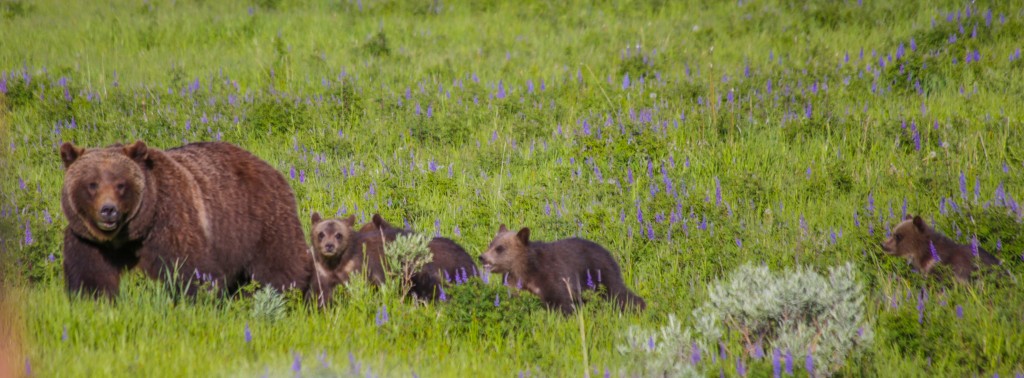
She is special to me because we also encountered her and three of her cubs during a visit to Grand Teton national park in 2007. It was a school trip organized by the math teacher and each kid was accompanied by at least one parent to give the math teacher a break. Grizzly 399 gave us a very memorable experience.
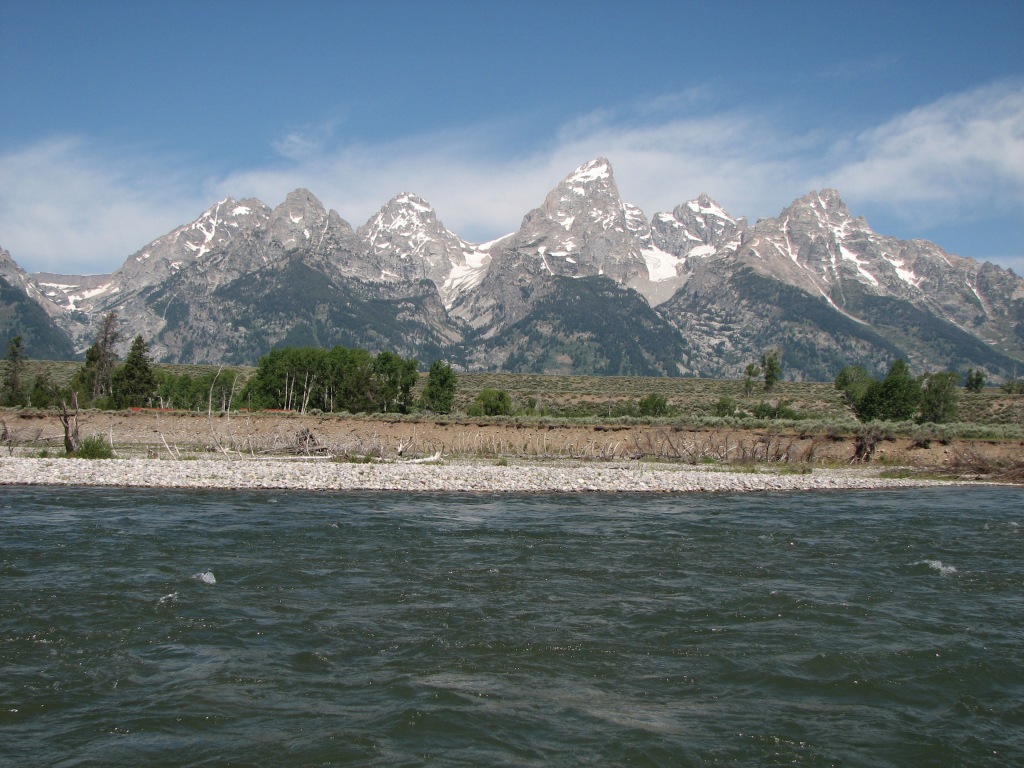
Grizzly 399 frequently sought human company. She came down to the roads with her cubs and stayed with the passersby for hours. She did not beg for food. She just wanted to stay with people and this article describes her as a gentle soul.
Grizzly bears seeking human company is normally a dangerous situation and grizzly bears seeking human company are therefore often shot to protect the public. Grizzlies are dangerous animals. They can kill people both out of aggression and for food. However, the park rangers left Grizzly 399 and her cubs alone because they deemed her harmless. She frequently interacted with people without ever showing any aggression towards people.
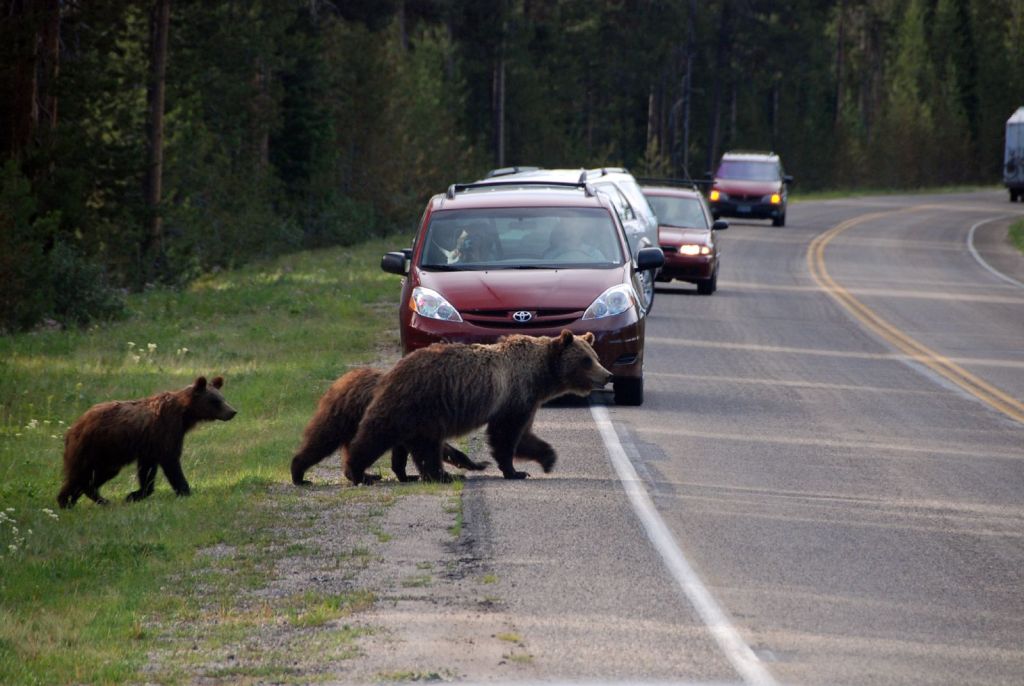
Her behavior was somewhat strange, but I was told by a ranger that male grizzlies sometimes kill cubs, and this was her way of protecting the cubs. Grizzlies tend to stay away from people, except her, so she used people as a shield to protect her cubs.
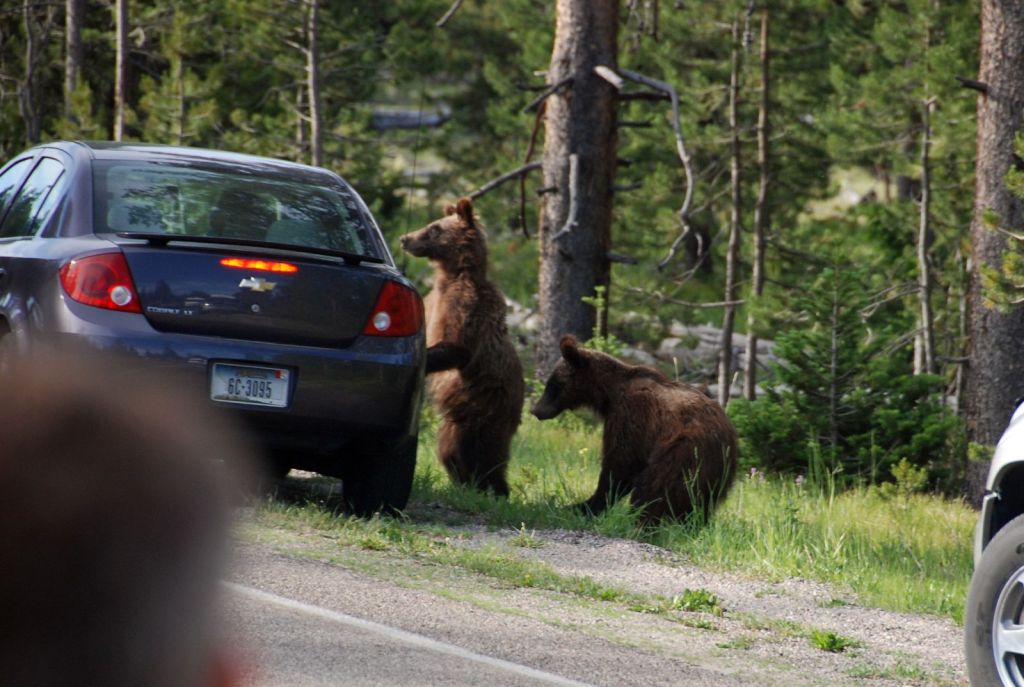
One ranger told us a story about 399 that sounded a bit scary. A hiker, hiking alone (which you should not do) stumbled upon 399 and her cubs as they were in the middle of eating an Elk carcass. He had come out of a thicket and had not seen them until he essentially bumped into them. He screamed on top of his lungs because he was shocked and started running. 399, who was equally startled, pursued him. He laid down on the ground as he had read that he should do when pursued by a grizzly. 399, sniffed him but did not touch him. Her two cubs bit his behind but not hard.
After the grizzlies had left, he stood up, walked away and went to a hospital to check out the bites on his bum, which allegedly were not bad.
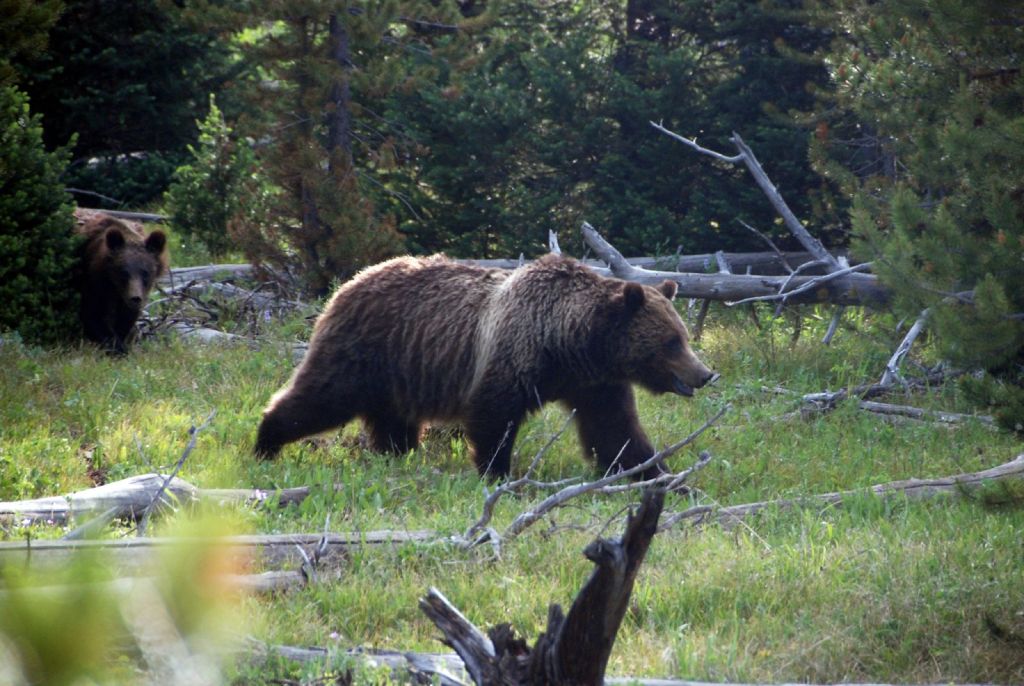
As for us, we had a somewhat scary experience with Grizzly 399, but as it turned out, we were never in any danger. Someone that he had seen enough and decided to leave, so he drove his car, with a trailer in between 399 and her cubs. Someone rightly thought that was dumb and decided to improve the situation by angrily honking.
As a result, 399 started running towards us, the large group of tourists standing outside taking pictures. People started screaming and running, and unfortunately the math teacher who had organized the trip fell and got trampled by the panicking people.
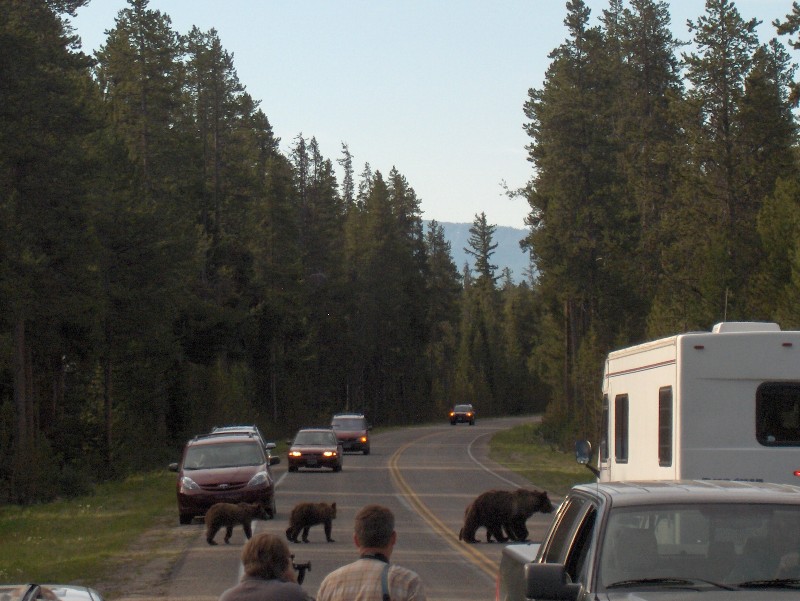
A lot of other things happened during the panic. People ran back to their cars or to any car. A couple of my fellow trip participants found themselves blocked from entering their own car (on the side away from the bear) because a plus sized lady was stuck in their door.
By pushing her from behind they were able to get her inside and could then enter the car themselves. The kids were standing on top of the SUVs that we had rented and crawled back into the cars through the sunroofs. My son entered the car last by his own choice.
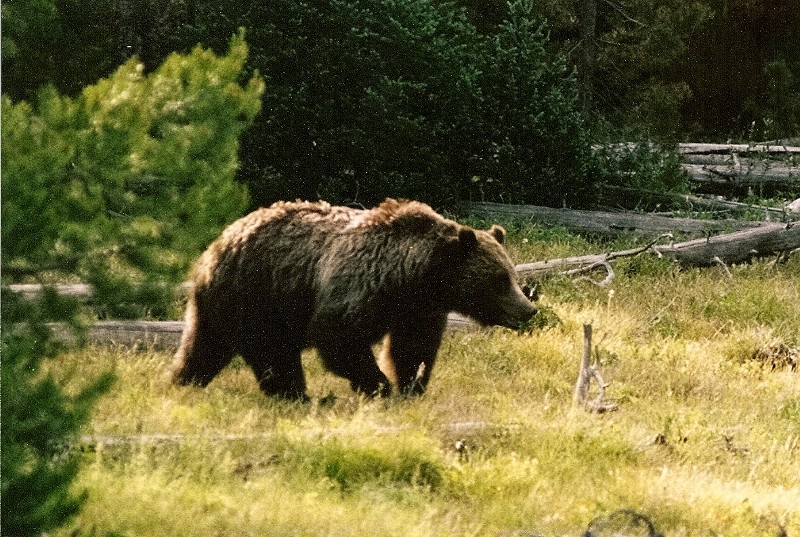
As it turned out the panic was completely unnecessary. 399 was not chasing anyone and was not really running towards us. She was running to the end of the car with the trailer to get around it to get to her cubs on the other side. Below are a few more photos taken by my fellow trip participants. I did not get good photos of this event, so I am not including them.
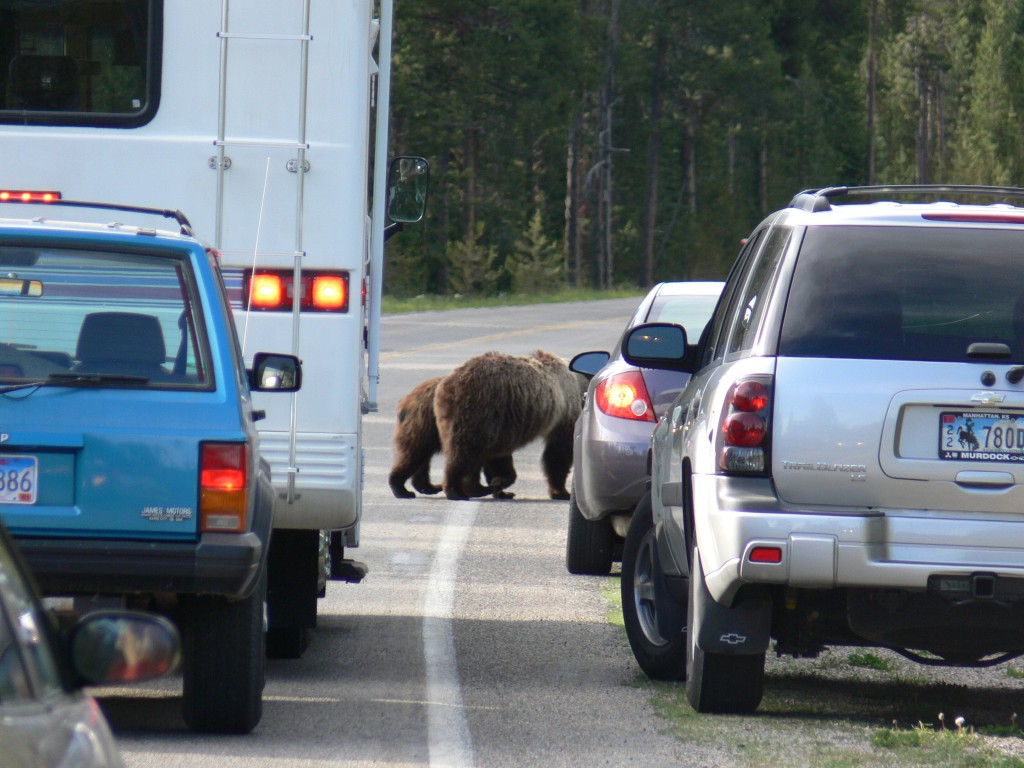
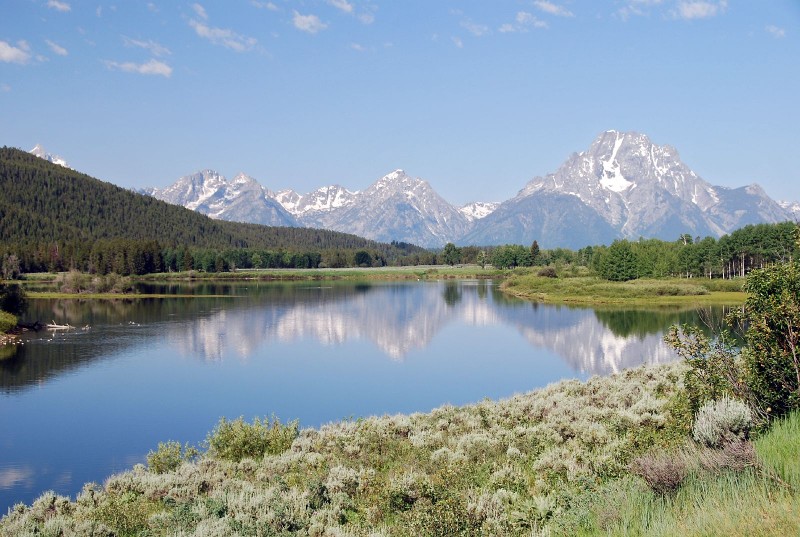
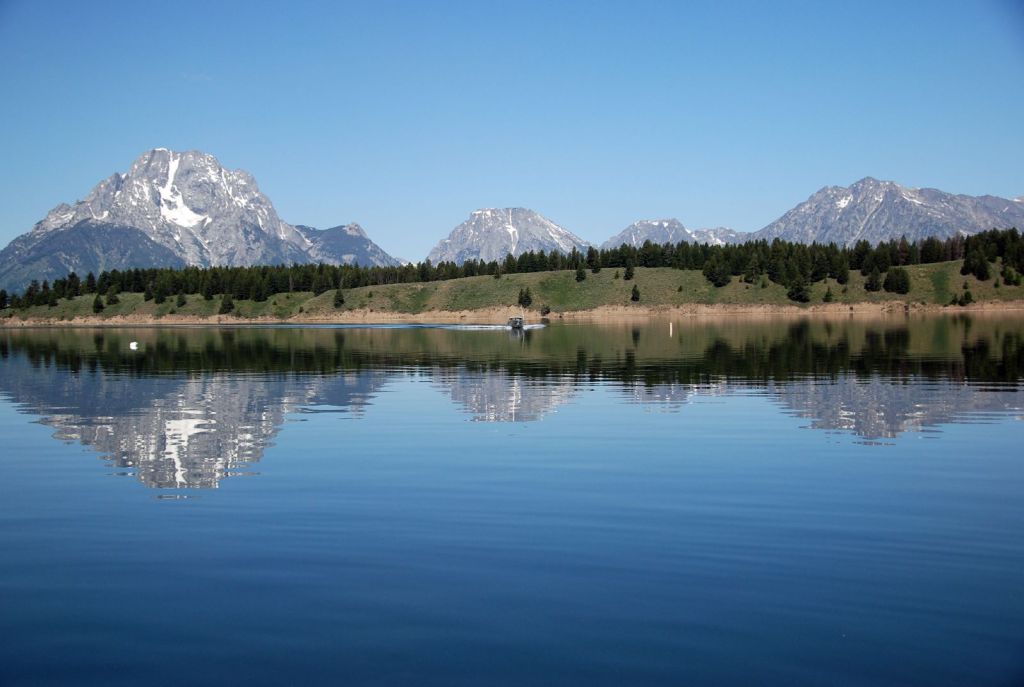
To see the Super Facts click here
]]>
When my daughter was 5-7 years old, she was part of what you can perhaps call a pre-girl-scout organization. It was called Indian Princesses. It later changed its name to Adventure Princesses. They had meetings where they learned things, and they went camping as a group with their dads or moms. There were bonfires, grilling, nature, fishing, adventures, jumping in mud, riding horses, and staying up late at night.
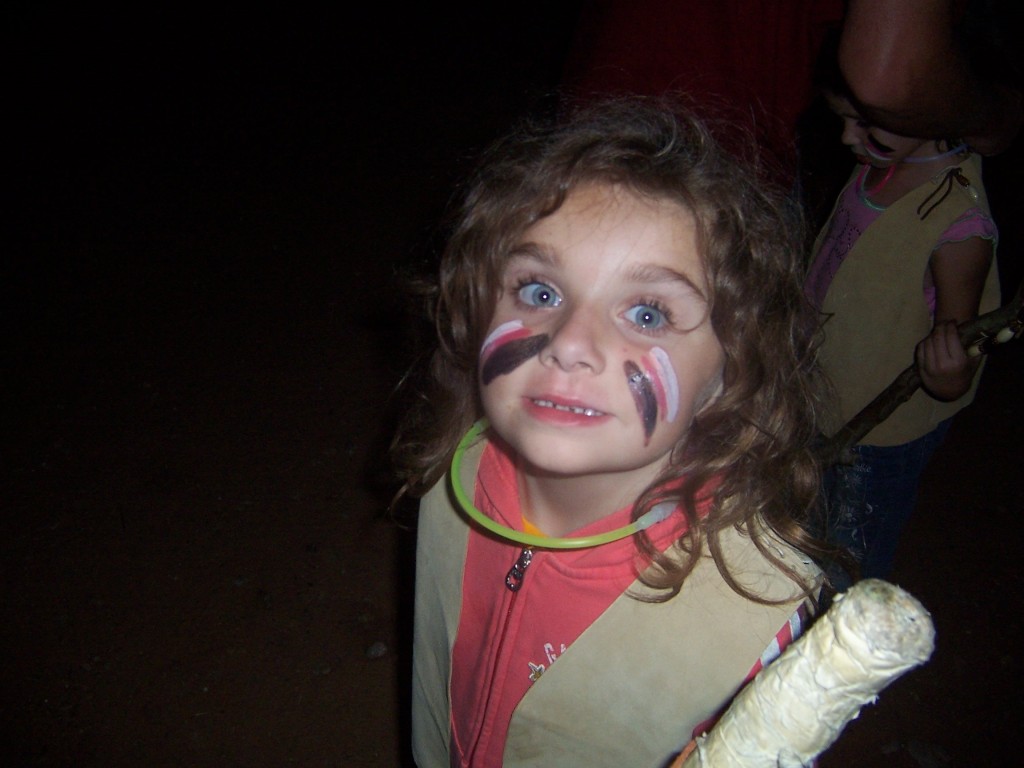
One time the Indian Princesses went camping in Camp Classen in Oklahoma. Since we live in North Texas it was not far away. One morning, as we were standing there talking and preparing breakfast, we saw a big black insect landing on the ground.
As we looked closer, we saw that it had landed on a Tarantula. It stung the tarantula, which stopped moving. Then it dragged the Tarantula through the grass about 100-150 feet and then under the girls’ bathroom. As we stood around the Tarantula and the big black insect, we saw that the insect had reddish wings and the body shape of a wasp or an ant. We did not know what it was. This was the year 2005 or possibly 2006 and cellphones with internet were not common.
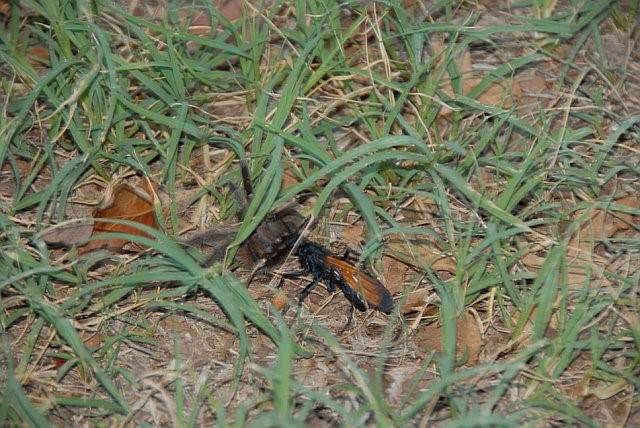
My daughter ran to get her jewelry box from her cabin. When she came back, she handed it to me and said, “Dad put them in here”. Another dad standing nearby started laughing and said, “yes Thomas I want to see you put them in the box.” It was quite lucky that I didn’t because the big black insect with reddish wings was what is called a Tarantula Hawk, a type of wasp, which allegedly has the most painful sting of any insect in the northern hemisphere. There is an insect with a worse sting in South America.

The Tarantula Hawk is a wasp that feeds on nectar but the female Tarantula Hawk stings and kills Tarantulas to feed its larvae. It stings the Tarantula between the legs, paralyzing it, and then drags the prey to a specially prepared burrow, where a single egg is laid on the spider’s abdomen, and the burrow entrance is covered.
According to this article one researcher described the tarantula hawk’s sting this way: “To me, the pain is like an electric wand that hits you, inducing an immediate, excruciating pain that simply shuts down one’s ability to do anything, except, perhaps, scream.
Below is a youTube video about the Tarantula Hawk.
Have you ever encountered a Tarantula Hawk or another scary wasp or insect?
To see the Super Facts click here
]]>